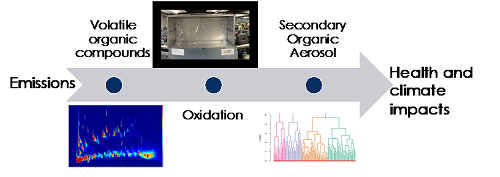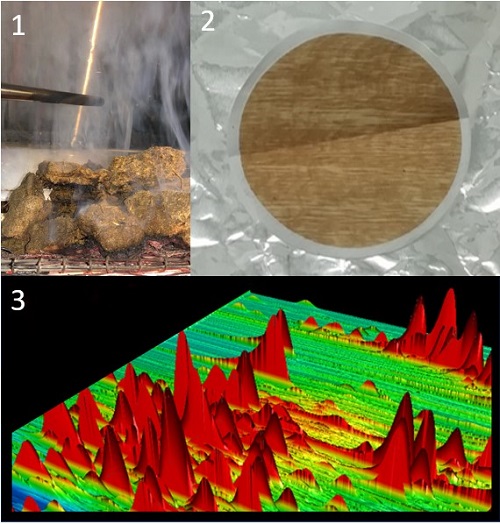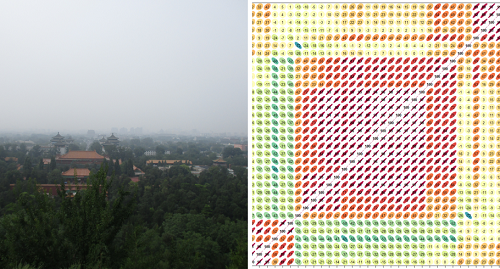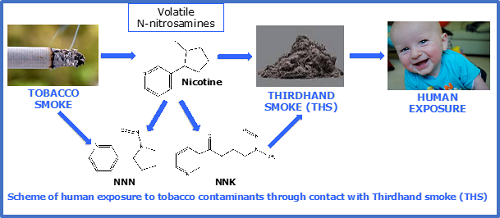Professor Jacqueline Hamilton
+44 (0)1904 324076
Email: jacqui.hamilton@york.ac.uk
Atmospheric Aerosol Chemistry, Air Quality, Analytical Chemistry
Aerosol Chemistry and Air Quality
Exposure to poor air quality is the top environmental risk factor of premature mortality globally, with an estimated 3 million premature deaths annually. Heart disease and strokes are the most common reasons for premature deaths, with other serious impacts including increases in respiratory and cardiovascular disease and cancer. By far the most damaging air pollutant to health is particulate matter (PM) also known as aerosols.
Measurements in urban areas indicate that carbonaceous material often dominates PM2.5. This carbon-based material is made up of both elemental carbon and organic carbon. Our previous work has shown that urban particles can contain more than 10,000 individual organic molecules making organic aerosol the most challenging and least understood component of urban air pollution. Organic aerosol can be directly emitted to the atmosphere from a range of anthropogenic sources, (diesel exhaust, industry, manufacturing, cooking, biomass burning), and natural sources (plant emissions, forest fires, sea surface) or can be formed in the atmosphere from the oxidation of volatile organic compounds (secondary organic aerosol, SOA).
My group aims to understand the formation of SOA by improving our understanding of the sources of VOCs to the atmosphere, their chemical transformation and the impact of aerosol composition on the physical properties of particles.

VOC emissions
We have developed a novel instrument to measure VOCs in the atmosphere using comprehensive two-dimensional gas chromatography (GCxGC). We can use either a field portable system or a lab based system coupled to time of flight mass spectrometry. Recent deployments include London, Beijing and Delhi. As the number of carbon atoms in a molecule goes up, the volatility decreases and the number of possible isomers increases exponentially. GCxGC is ideally suited to looking at these larger hydrocarbons and our recent work has shown the diesel engines in London emit far more VOCs to the environment than expected based on previous measurements (https://www.envchemgroup.com/jacqui-hamilton.html). By comparing real-world urban composition with regulatory emissions inventories in the UK and US highlights a previously unaccounted for, but very significant, under-reporting of diesel-related hydrocarbons; an underestimation of a factor ~4 for C9 species rising to a factor of over 70 for C12 during winter.

Figure 1: Comparison of the amount of reactive carbon in London in summer (right) and winter (left). Diesel emissions can make up the majority of the reactive carbon and hence be important for ozone and SOA formation.
We also investigate the VOC emissions from different sources, such as diesel exhausts, cooking and biomass burning.

Figure 2: 1. Burning of cow dung at the National Physical Laboratory, New Delhi. 2. Aerosol collected from dung burning. 3. GCXGC chromatogram showing VOC emissions.
Sources of Secondary Organic Aerosol
We can still only characterise a very small fraction of the organic mass of particles, inhibiting our ability to draw conclusions about their source. Thus even fundamental questions, such as whether natural or anthropogenic emissions form more SOA in our cities, and what factors influence the formation of SOA, remain unanswered. A recent DEFRA report, on the state of the science related to secondary particulate matter in the UK, highlighted that the current level of understanding of SOA formation was low. We develop new tools to allow high throughput screening and quantification of SOA tracers in atmospheric aerosol samples. We have developed novel methods using ultra high-resolution mass spectrometry coupled to ultra-high pressure liquid chromatography to obtain some of the most detailed observations of aerosol composition. We combine this with other techniques available at York including ion chromatography to study the formation of inorganic ions and GCxGC with TOFMS for the characterisation of semi-volatile organic compounds. We are also developing modern machine learning techniques to make a step change in our understanding of the sources of SOA in urban and rural environments.
Recent work has been looking at the interaction between biogenic emissions from plants and anthropogenic pollutants in megacities. Megacities such as Beijing and Delhi have very high levels of emissions from traffic and burning sources. However, they also have a lot of green space and there can be significant emissions of isoprene and monoterpenes from plants.

Figure 3: Left: Photograph of haze in Beijing. Right: Correlation plot of isoprene SOA tracers.
Organic Nitrogen species
My group are also interested in the identification and quantification of harmful organic nitrogen species in a range of matrices. My group developed the first two-dimensional gas chromatograph coupled to nitrogen chemiluminescence detector method for atmospheric science. However, the versatility, selectivity and sensitivity have led us to a range of other applications. Current research revolves around understanding the formation of carcinogenic nitrosamines from nicotine deposited to particles and to house dust, known as third hand smoke. My group carried out the first cancer risk assessment of THS contaminated house dust, and highlighted the severe long-term consequences of THS exposure, particularly to children, and gave strong evidence of its potential health risk. We are also investigating the possible formation of nitrosamines from the amines used in post combustion carbon capture methods.

Selected Publications
Pereira, K. L., Rovelli, G., Song, Y. C., Mayhew, A. W., Reid, J. P., and Hamilton, J. F.: A new aerosol flow reactor to study secondary organic aerosol, Atmos. Meas. Tech., 12, 4519–4541, https://doi.org/10.5194/amt-12-4519-2019, (2019).
Pereira, K. L., Dunmore, R. E., Whitehead, J., Rami Alfarra, M., Allan, J., Alam, M. S., Hamilton, J. F. Technical note: Use of an atmospheric simulation chamber to investigate the effect of different engine conditions on unregulated VOC-IVOC diesel exhaust emissions. Atmospheric Chemistry and Physics, 18, 11073-11096, (2018).
Ots et al., Simulating secondary organic aerosol from missing diesel-related intermediate-volatility organic compound emissions during the Clean Air for London (ClearfLo) campaign, Atmospheric Chemistry and Physics, 16, 6453-6473, (2016).
Dunmore et al., Diesel-related hydrocarbons can dominate gas phase reactive carbon in megacities, Atmospheric Chemistry and Physics, 15, 9983-9996, (2015).
Farren, N.J., Ramirez, N., Lee, J.D., Finessi, E ., Lewis, A.C., Hamilton, JF. Estimated Exposure Risks from Carcinogenic Nitrosamines in Urban Airborne Particulate Matter. Environmental Science and Technology, 49, 9648-9656, (2015).
Ramirez, N., Ozel, M. Z., Lewis, A. C., Marce, R. M., Borrull, F., and Hamilton, J. F.: Exposure to nitrosamines in thirdhand tobacco smoke increases cancer risk in non-smokers, Environment International, 71, 139-147, 10.1016/j.envint.2014.06.012, (2014).
Robinson, N.H., Hamilton, J.F. et al., Evidence for a High Proportion of Atmospheric Organic Aerosol from Isoprene. Atmospheric Chemistry and Physics, 11, 1039-1050, (2011).
Hamilton, J.F., et al., Investigating the composition of secondary organic aerosol from cyclohexene ozonolysis: low molecular weight and heterogeneous reaction products. Atmospheric Chemistry and Physics, 6, 4973-4984 (2006).
Hamilton, J.F., et al., Partially oxidised organic components in urban aerosol using GCXGC-TOF/MS. Atmospheric Chemistry and Physics, 4, 1279-1290 (2004).

